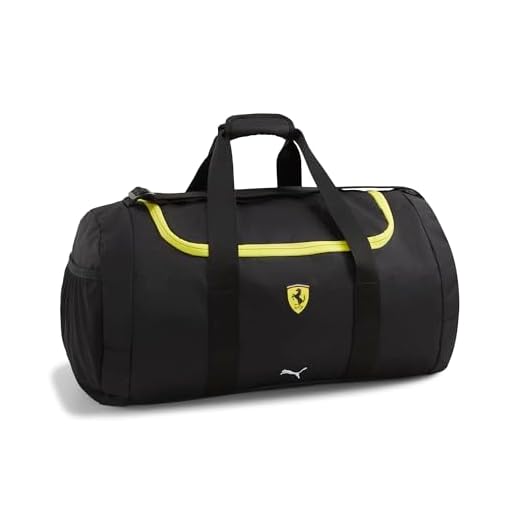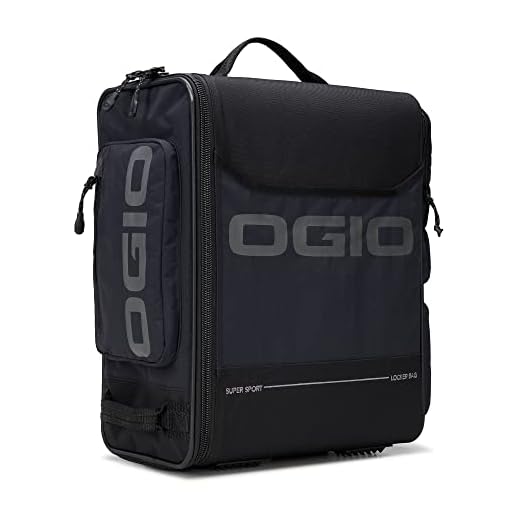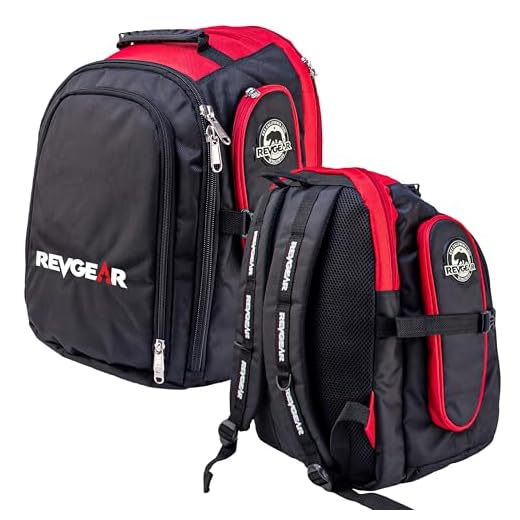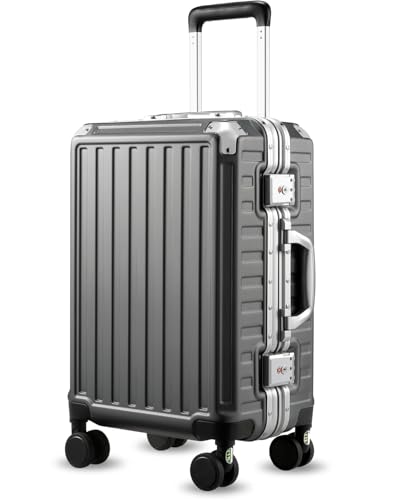





Recommendation: assume each guest can securely stow one carry-on (55 × 40 × 20 cm / 21.6 × 15.7 × 7.9 in) and a small personal item inside included lockers; any hard-shell checked case larger than ~65 × 45 × 25 cm will usually require a paid locker, reception deposit, or offsite depot.
Common locker footprints fall into three practical categories: compact cubbies for backpacks and tablets (~30–40 cm high × 30–40 cm deep × 40–50 cm wide), standard lockers that take one upright carry-on or a medium suitcase (~60–80 cm high × 35–45 cm deep × 45–55 cm wide), and tall lockers for larger valises or two stacked carry-ons (~100–120 cm high × 35–45 cm deep × 45–60 cm wide). Typical weight limits are 15–30 kg per compartment; check the site’s posted limit before leaving heavier gear.
Pricing and availability vary: many venues include same-day holding free for overnight guests, while paid lockers commonly run from about $1–$10 per 24 hours; dedicated long-term depots or oversized lockers can cost $5–$25 per day. Practical steps: measure your largest case before arrival, use soft-sided bags to squeeze into narrower spaces, load wheels-first when lockers are shallow, keep passports and electronics with you, and photograph the compartment and lock number on drop-off.
Locker dimensions in pod inns
Choose a soft-sided carry-on no larger than 55×40×23 cm (21.6×15.7×9 in) to fit most pod lockers and under-pod compartments.
Typical compartment categories and internal dimensions (approximate): under-pod compartment – 45×35×25 cm (17.7×13.8×9.8 in): fits 20–35 L backpacks, daypacks and parcels; standard communal locker – 60×40×40 cm (23.6×15.7×15.7 in): fits a 45–60 L pack or a 55×40×23 cm carry-on; oversized/reception hold – up to 90×60×45 cm (35.4×23.6×17.7 in): accepts medium checked suitcases (24–26 inches / 61–66 cm) with typical weight limits 15–20 kg.
Typical fees and limits: small personal compartments are frequently complimentary; larger lockers or reception-held items often incur a daily charge in the range ¥300–¥800 (~$2–$7) or a flat fee $5–$10 for oversized pieces; many properties refuse items above ~100×70×50 cm or exceeding 20–25 kg.
Practical recommendations: use a compressible duffel or soft-sided case, remove or tuck wheels and rigid handles to gain a few centimetres, pack bulky outerwear compressed or left in a daypack, keep valuables and electronics with you or inside the pod’s secure shelf. Measure your bag and send dimensions and a photo to the property before arrival if unsure; request confirmation of acceptance and any surcharge.
If your bag exceeds available locker dimensions, reserve a nearby left-luggage service (station/backpacker centre) or ship the case ahead via courier with documented pick-up times to avoid being turned away at reception.
Typical locker dimensions and what size bags they hold
If you plan to carry a standard airline carry-on, reserve a compartment with internal dimensions of at least 56×36×23 cm (22×14×9 in); for a checked suitcase pick a section around 75×50×30 cm (30×20×12 in) or larger.
| Locker type | Typical internal dimensions (W×D×H) | Fits (examples) | Max bag dimensions to check (W×D×H) |
|---|---|---|---|
| Small / Personal | 30×25×20 cm (12×10×8 in) | Small daypack (10–20 L), purse, helmet | 28×24×18 cm |
| Medium / Daypack | 40×35×25 cm (16×14×10 in) | 30–35 L backpack, briefcase, camera bag | 38×33×23 cm |
| Carry-on sized | 56×36×23 cm (22×14×9 in) | Standard airline carry-on (up to 55×40×23 cm), 40–45 L roller | 55×40×23 cm |
| Large / Checked | 75×50×30 cm (30×20×12 in) | 24–26″ hard or soft-case suitcase | 66×45×28 cm (24–26″ suitcase) |
| Long / Oversize | 100–140×35×35 cm (39–55×14×14 in) | Skis, snowboard bag, long sports equipment, oversized cases | up to 140×35×35 cm |
Measurement tips
Measure your bag including wheels, side pockets and the extended handle; use the widest and tallest points. When a bag is soft-sided, subtract 2–3 cm of compressibility but verify door clearance and hinge space. If a dimension is within 2–3 cm of the compartment limit, choose the next size up.
Practical recommendations
Store bags upright when possible (wheels down) to save depth. For roll-aboard suitcases, test whether the handle can retract fully while inside the compartment. For tight fits, remove fragile items or use soft packing to compress bulk rather than forcing a rigid case.
Check locker availability and reserved hold options
Reserve a locker through the venue’s official booking page or by phone at least 24 hours before arrival; for weekends, holidays or event dates reserve 48–72 hours ahead to secure a spot.
Online and direct-confirmation steps
1) Visit the accommodation’s amenity or FAQ page – look for a dedicated locker reservation form, hourly access times, per-item fees and any maximum number of units per guest. 2) If the website lacks detail, send a screenshot of your arrival date/time plus bag count to the listed contact email or messaging account (LINE/WhatsApp); request a written confirmation with locker number or reservation code. 3) When booking via third-party platforms, cross-check the property’s own site or contact front desk directly; third-party listings sometimes omit size and fee specifics.
On-site procedures, fees and fallback options
At check-in confirm: access method (key, PIN, keycard), access hours (24/7 or limited), hold limit in hours/days, late retrieval penalties and declared-value liability caps. Typical on-property policies: 10–40 lockers available, charges commonly $2–6 per 24-hour period, oversized item surcharges $5–10, free short-term holds 3–12 hours. If the venue cannot guarantee a unit, ask for a stamped receipt and the exact time after which fees begin; keep a photo of the receipt and locker tag. For overflow, use nearby station coin lockers or staffed left-baggage services – expect coin lockers $1–4 per use and staffed services $5–15 per day depending on size.
Before leaving items: label bags with name and phone, take a photo of the sealed locker and its tag or PIN, and confirm the retrieval window and refund/claim procedure for lost tags. Check the provider’s terms for declared-value limits (often $50–200) and consider travel insurance or removing high-value items if coverage is insufficient.
Options for oversized baggage: reception, paid hold, external services
Hand large suitcases to reception first: most capsule accommodations accept items that exceed pod lockers and usually impose the lowest fee and shortest paperwork.
- Reception / front desk
- Typical acceptance: items up to 160–200 cm linear (length+width+height) and 20–30 kg without extra charge; anything larger often permitted for a fee.
- Common fees: free at check-in/out, or nominal daily charge ¥300–¥1,500 (~$2–$12) for oversized or long-term holds.
- What to request: a written receipt with item description, hold duration, and declared liability limit; note pick-up hours (many desks close overnight).
- Limits: reception often refuses hazardous goods, perishables, or very heavy items (over 30–40 kg) – ask in advance.
- Paid onsite hold services (private left-luggage)
- Use these when reception refuses or charges high rates. Price ranges: small/medium/large units typically $5–$20 per 24 hours depending on city and size.
- Unit types: oversized lockers (roller-door), staffed left-luggage counters at major stations/airports, and automated lockers measuring up to ~180 cm tall for large suitcases.
- Insurance/claims: read the maximum liability clause; many providers cap compensation unless you pay extra declared-value protection.
- External solutions (best for long holds or transit)
- Courier forwarding: door-to-door services move items between cities or to airports; domestic same-country rates commonly ¥1,000–¥3,000 (~$8–$25) depending on size and distance, delivery 1–3 days.
- Third-party locker networks and apps: book via mobile apps for hourly/daily rates; remote pickup coordinates are often 24/7 and start at ~$6/day.
- Self-storage units: monthly contracts from $30–$200 depending on unit size – use for leaves longer than a week.
- Station/airport left-luggage counters: open at major hubs, fees vary by size and duration; ideal for same-day or short transit holds.
Practical checklist before handing over a large bag
- Measure total linear dimension and weight; confirm provider limits before arrival.
- Remove irreplaceables (documents, electronics, medications) and photograph contents and exterior labels.
- Attach a luggage tag with name, phone, and pick-up date; keep a copy of the receipt number and contact details.
- Ask for declared-value coverage if contents exceed nightly liability caps; note extra fee for declared value.
- Verify pickup window and late-fee policy; get a clear collection deadline in writing.
- Secure zippers with cable tie or small padlock if allowed; avoid burying fragile items at the bottom.
When to choose which option
- Reception: choose for short stays and minimal fees; best if arrival/departure coincide with desk hours.
- Paid onsite hold: choose for guaranteed holding during your day trips or when reception capacity is limited.
- External services: choose for long-term holds, intercity transfers, or when you need 24/7 access and insurance options.
If rainproof protection is needed during transfers, carry a compact cover and a reliable umbrella such as the best windproof umbrella in the world. For a durable oversized case purchase or replacement prior to travel, check options at best luggage shop los angeles.
Measuring your bag and packing tips to fit capsule accommodation lockers
Measure your bag’s height, width and depth while packed, then subtract 2–3 cm from each dimension to allow for hinges and door clearance before attempting to slide it into a capsule-unit locker.
Use the diagonal trick for narrow openings: if the aperture is W × H, the maximum single-piece length that will pass through when angled is sqrt(W² + H²). Example: a 35 × 50 cm opening yields a diagonal ≈ 61 cm – a 60 cm soft bag can pass diagonally while a rigid 62 cm shell cannot.
Pack to reduce one or two outer dimensions rather than overall volume. Roll T‑shirts and thin layers into cylinders, use a 10–15 L compression sack for bulky sweaters, and reserve packing cubes for rigid items (chargers, underwear). Place rigid or oddly shaped items (toiletry case, camera kit) at the bottom so the soft bulk can be squashed around them.
Prepare the exterior: tuck or remove telescoping handles, fold shoulder straps flat, and position wheels inward. Replace hard-shell cases with a soft duffel or soft-sided carry bag when you expect tight compartments. Wrap breakables in clothing and carry high-value electronics in a padded pouch; pack batteries separately in a small, clearly labeled pouch – see are digital cameras recyclable for end-of-life considerations for photo gear.
Seal all liquids in clear zip bags and limit bottles to travel sizes to avoid leaks and wasted space. If an item still won’t fit, redistribute heavy contents into a small daypack, leave bulky outerwear at reception, or choose an external short-term option rather than forcing a poor fit.
Quick checklist: tape measure, marker to note bag dimensions, 2–3 cm clearance per axis, compression sack or packing cubes, soft-sided bag preferred, batteries/personal electronics in padded pouch, liquids in sealed bags, shoes and coat moved out if necessary.








